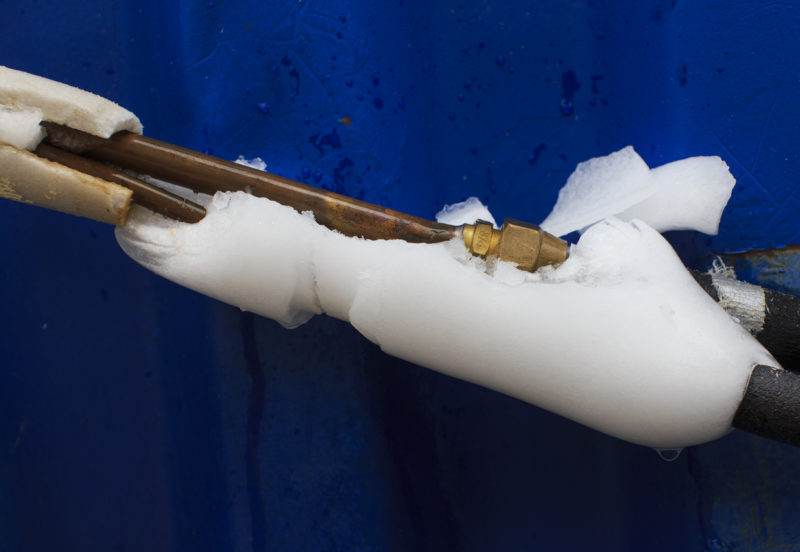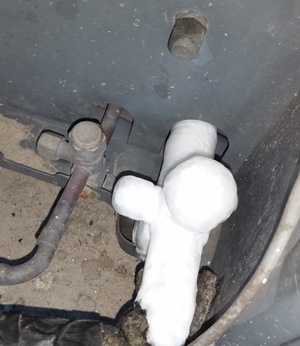Identifying a Frozen AC Pipe - Effective Solutions for House Air Conditioning Systems
Identifying a Frozen AC Pipe - Effective Solutions for House Air Conditioning Systems
Blog Article
Have you been in search of help and advice on How can I fix an air conditioner’s frozen pipe??

Intro
Uncovering that your a/c pipeline is iced up can be concerning, particularly throughout warm summertime when you rely upon your air conditioning unit the most. Recognizing what to do in such a situation is crucial to avoid further damage to your cooling system and guarantee your comfort inside your home.
Understanding the Causes
Numerous factors can contribute to the cold of an air conditioning pipe. Comprehending these causes can assist you address the concern successfully.
Absence of Airflow
One common cause of a frozen air conditioner pipeline is inadequate airflow. When the air movement over the evaporator coil is restricted, it can create the coil to go down below freezing temperature level, leading to ice development on the pipe.
Low Refrigerant Levels
Inadequate refrigerant levels in your air conditioner system can additionally result in a frozen pipeline. Low cooling agent levels can trigger the stress in the system to go down, causing the cold of wetness on the evaporator coil.
Cold Weather Conditions
In chillier climates, freezing temperature levels outside can add to the cold of air conditioner pipelines. If your a/c device is not effectively insulated or if there are leakages in the ductwork, cold air can infiltrate the system, triggering the pipeline to ice up.
Dirty Air Filters
Unclean or clogged air filters can restrict airflow in your air conditioning system, leading to different concerns, consisting of an icy pipeline. It's essential to replace or cleanse your air filters routinely to ensure proper air movement and stop ice build-up.
Indications of a Frozen AC Pipe
Recognizing the signs of an icy air conditioner pipe is vital for timely action.
Lowered Airflow
If you observe a considerable decline in air movement from your vents, it can indicate an icy pipe.
Ice Buildup on the Pipe
Visible ice accumulation on the refrigerant line or the evaporator coil is a clear sign of a frozen air conditioning pipeline.
Weird Sounds from the Unit
Unusual sounds, such as hissing or bubbling, coming from your air conditioning device can signify that there's ice present on the pipe.
Immediate Actions to Take
When confronted with a frozen air conditioning pipe, it's important to act swiftly to avoid further damages to your cooling system.
Turning off the air conditioning
The first step is to shut off your air conditioning system to stop the system from running and exacerbating the issue.
Checking for Blockages
Check the area around the indoor device for any obstructions that might be blocking air flow, such as furnishings or drapes.
Defrosting the Pipe
You can make use of mild techniques like positioning towels soaked in warm water around the frozen pipeline to aid thaw it gradually.
Safety nets
Taking preventive measures can help stay clear of future occurrences of a frozen air conditioning pipeline.
Routine Maintenance Checks
Arrange routine maintenance get in touch with a specialist HVAC professional to make certain that your a/c system is running efficiently.
Changing Air Filters
Regularly replace or clean your air filters to avoid airflow constraints and maintain ideal performance.
Insulating Exposed Pipes
If your air conditioning pipelines are revealed to cold temperature levels, think about protecting them to stop cold during cold weather.
Seeking Professional Help
If DIY methods fall short to solve the concern or if you're uncertain concerning how to continue, it's ideal to look for assistance from a certified HVAC professional.
When DIY Methods Fail
If your efforts to thaw the pipe or address other concerns are unsuccessful, it's time to call a specialist.
Relevance of Hiring a Professional HVAC Technician
A certified HVAC service technician has the know-how and tools essential to diagnose and repair concerns with your AC system securely and successfully.
Conclusion
Handling an icy air conditioning pipe can be a frustrating experience, but knowing how to respond can help lessen damage and bring back convenience to your home. By comprehending the causes, acknowledging the signs, and taking punctual action, you can efficiently address the issue and protect against future occurrences.
What to Do If Your AC Line Is Frozen
Make Sure All Supply and Return Air Vents Are Open
If you notice problems with airflow, the first thing you should do is check your supply and return vents. Supply vents distribute clean, conditioned air throughout your home. As this air becomes stale, it’s pulled into the return vent, where it’s reconditioned before being sent back out through the supply vent.
When these vents are closed, air won’t flow in the home. Before examining your AC, check the vents in every room and ensure they’re all open.
Check for a Dirty Air Filter
Another possible cause of limited airflow is a dirty air filter. Your air conditioner’s filters catch elements you don’t want to breathe in, such as dirt and dust. Over time, filters can become clogged, ultimately blocking air from flowing in and out. The lack of airflow can then cause the entire coil to freeze and will completely restrict any air from moving through it. The AC may need to be powered off for one to two days to allow the coil to thaw after replacing the filter to allow proper functioning of the unit. This debris can also accumulate on your AC’s evaporator coil, requiring a more serious repair. In general, air filters should be cleaned regularly (about every two weeks).
Assess Your Outdoor Unit
In addition to checking your AC, assessing the outdoor unit is a good idea. Also known as the condensing unit, it works with your interior unit to release heat outside. An issue with the outdoor unit can result in rising internal temperatures.
Overgrown Shrubs or Clogged Leaves
From leaves and twigs to shrubs and debris, there’s no shortage of outdoor elements that can accumulate around your condensing unit. When these elements get lodged inside the unit, they can block airflow. Fortunately, removing the blockage can solve the problem.
Sounds of a Broken Fan
Shrubs and leaves aren’t the only things that can impede your outdoor unit’s airflow. If the fan is broken, the unit won’t be able to properly get rid of heat — which means the internal temperature won’t go down. First, make sure the fan is spinning. If it is, check for the following sounds of a broken fan:
Buzzing Rattling Screeching Hissing Clicking Preventative Measures
Nobody wants to deal with a frozen AC line. In addition to causing problems with your air conditioner, they require professional repairs. On the bright side, there are preventative measures you can take to help ensure this issue doesn’t arise in the first place.
https://www.coopergreenteam.com/blog/what-to-do-if-ac-line-frozen

Do you like more info about Air Conditioner Frozen? How To Fix your Frozen AC Line? Write a remark further down. We would be interested to see your ideas about this posting. In hopes that you visit us again later on. If you please set aside a second to distribute this content if you enjoyed it. Kudos for your time. Come back soon.
Pricing Report this page